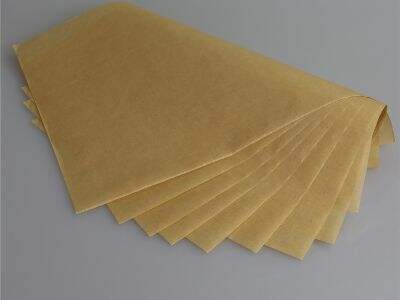In the cooking world in a kitchen, you are provided with tools and resources to help you create a good meal. Two materials we use a lot of are deli paper and parchment paper. They may share similarities, but they also have key differences which make them special. So let us take a look at these differences and learn to use deli paper and parchment paper in cooking.
What Is the Difference Between Deli Paper and Parchment Paper?
The first is deli paper, which is a thin paper often used for wrapping sandwiches or other foods. It is typically coated so that it is grease-resistant, and keeps food fresh (not soggy). The interfolded deli paper also works well lining plates or baskets when serving food in a fun, clean manner.
Parchment paper is a type of heat-resistant paper. We use it for baking and for cooking. It has a non-stick surface, making it ideal for lining baking sheets or wrapping food for in-oven cooking. Parchment paper is also good for steaming fish or veggies, because it helps keep moisture and flavor in.
Deli Paper and Parchment Paper
Deli paper is used in delis, restaurants and food trucks to wrap sandwiches, burgers or food items to go. It is also used in bakeries to separate sheets of pastries or cookies and keep them fresh. Also, deli paper is used as a liner for serving trays or baskets for the purpose of looking appealing.
For baking cookies, cakes and other treats, parchment paper is a must-have in many home kitchens. It can also be used to line cake pans, muffin tins or roasting pans to prevent food from sticking. Parchment paper isn’t just for baking sweets and it’s flexible enough to be helpful to any cook, sweet or savory.
Parchment Paper And Deli Paper Heat Resilience
One important note: Deli paper is not heat-resistant, so it should not be used in the oven or microwave. Best for wrapping up cold or room temp food. Buying food in made to order shops requires the hot food to be kept warm, deli paper is perfect for making sure that warm foods such as burgers or sandwiches hot.
Parchment paper can take high temperatures up to 450 degrees F. This is ideal for baking cookies, cakes, and other dishes in the oven. Because cooking parchment paper won’t burn or melt, it can also be used to steam or grill food.
Differences in Visuals and Textures
Deli paper makes for a very thin, semi-translucent paper for your projects with a smooth surface for easy writing as well. Available in various colors and patterns, it also makes for a fun wrapper for food or liner for serving trays. Deli paper is pliable and shaped into different forms by folds or crumples.
In contrast to deli paper, parchment paper is thicker, less transparent and has a slightly waxy touch. When it is white or brown it prevents food from browning too quickly in the oven. Parchment paper can also be easily torn and folded, making it easy to use when lining pans or wrapping food.
Deli Paper and Parchment Paper Sustainability
Deli paper is usually made from new paper, which is a threat to the environment. Some deli paper is made from recycled content or is compostable, so it can help reduce waste and promote sustainability. Using deli paper cautiously and recycling it can mitigate its impact on the environment.
Parchment paper is made from wood pulp that’s treated into a non-stick surface. Although this process isn’t particularly eco-friendly, parchment paper is biodegradable and can be composted after use. Using parchment paper a few times can help lower waste and make it a better cooking option.
In summary, deli paper and parchment paper are both relatively useful resources that help us cook and serve food in eclectic ways. Having an awareness of the unique properties of these papers will help inform us as to how best to utilize them in our kitchens. From wrapping sandwiches in deli paper to baking cookies on parchment paper, these tools play an important role in making our culinary adventures delicious and fun. But next time you are in the kitchen, make sure to have your deli paper or parchment paper ready to go, and get cooking.

 EN
EN
 AR
AR
 BG
BG
 HR
HR
 CS
CS
 DA
DA
 NL
NL
 FI
FI
 FR
FR
 DE
DE
 EL
EL
 HI
HI
 IT
IT
 JA
JA
 KO
KO
 NO
NO
 PL
PL
 PT
PT
 RO
RO
 RU
RU
 ES
ES
 SV
SV
 TL
TL
 ID
ID
 LV
LV
 LT
LT
 SR
SR
 SK
SK
 SL
SL
 UK
UK
 VI
VI
 ET
ET
 HU
HU
 TH
TH
 TR
TR
 AF
AF
 HY
HY
 KA
KA
 KK
KK
 UZ
UZ

